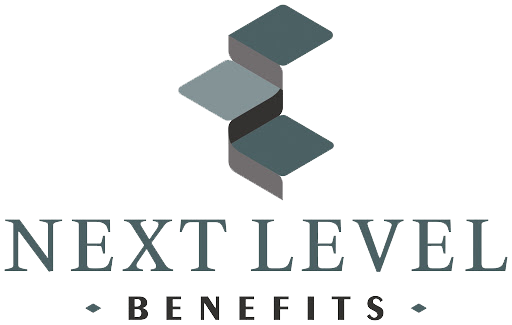Employee Benefits
- LIFE INSURANCE AND AD&D
- DEPENDENT LIFE INSURANCE
- CRITICAL ILLNESS INSURANCE (CI)
- DISABILITY COVERAGE
- EXTENDED HEALTH CARE (EHC)
 Life Insurance provides your employees the peace of mind in knowing that their families would receive a tax-free lump sum payment in the event of the employee’s death. The Life Insurance benefit is generally based on either a multiple of an employee’s income or a predetermined flat amount.
Life Insurance provides your employees the peace of mind in knowing that their families would receive a tax-free lump sum payment in the event of the employee’s death. The Life Insurance benefit is generally based on either a multiple of an employee’s income or a predetermined flat amount.
The Life Insurance benefit is one of the most important aspects of any Employee Benefits program, as it offers ‘no questions’ asked coverage to any and all employees of your organization. This can be of paramount importance to individuals that do not qualify for Individual Life Contracts.
 Dependent Life Insurance provides monetary benefits to the Employee (Plan Member) in the event of spouse or dependent child’s death. Although the amount of coverage here is generally quite modest, the intended purpose of this coverage is to meet the funeral or burial expenses for that respective dependent. Dependents are generally defined as an employee’s spouse who is not legally separated from the employee and an employee’s unmarried dependent children, who are older than 14 days of age and younger than 21 (or 25 if in a full time accredited post-secondary institution).
Dependent Life Insurance provides monetary benefits to the Employee (Plan Member) in the event of spouse or dependent child’s death. Although the amount of coverage here is generally quite modest, the intended purpose of this coverage is to meet the funeral or burial expenses for that respective dependent. Dependents are generally defined as an employee’s spouse who is not legally separated from the employee and an employee’s unmarried dependent children, who are older than 14 days of age and younger than 21 (or 25 if in a full time accredited post-secondary institution).
Dependent Life plans offer coverage in flat amounts only. It is very common to find plans that will cover a spouse for $5,000 – $10,000 and any dependent children for $2,500 – $5,000. Although it is great that plans are offering Dependent Life Coverage, we have found that these limits are insufficient in even subsidizing funeral costs.
To this end, Next Level is now able to offer its clients:
- Spousal Life Insurance: Up to $25,000
- Dependent Life Insurance: Up to $12,500
 Being diagnosed with serious illness can be both financially and emotionally stressful. Critical Illness Insurance helps provide financial security so you can concentrate on what matters most – your recovery. The reality is that while provincial and private health care plans may help cover medical expenses, they do not cover the costs of all drug and medical treatments. These expenses can be extremely costly and many are not covered once your leave the hospital.
Being diagnosed with serious illness can be both financially and emotionally stressful. Critical Illness Insurance helps provide financial security so you can concentrate on what matters most – your recovery. The reality is that while provincial and private health care plans may help cover medical expenses, they do not cover the costs of all drug and medical treatments. These expenses can be extremely costly and many are not covered once your leave the hospital.
Disability plans can alleviate some of the financial constraints from loss of income (generally 66.67% of your weekly/monthly income), but would that be enough money to cover your medical expenses as well as your normal monthly expenses? Not all CI plans are built the same and the fine print is generally what makes the difference! Let one of our experts at Next Level guide you to the right program for your organization.
 Short-Term Disability/Weekly Indemnity
Short-Term Disability/Weekly Indemnity
Short Term Disability or Weekly Indemnity coverage is intended to compensate employees who cannot work due to illness, injury or accident. STD (or WI) is an income replacement benefit and will offer this income protection for up to 26 weeks – although 15 to 17 weeks is most common. The rationale for STD running for 15 to 17 weeks is to coincide with the Long -Term Disability Elimination Period (or Waiting Period) or to be used as a replacement for the coverage Employment Insurance (EI) offers.
STD or WI will generally begin paying on the 1st, 8th or 15th day of disability, but this will completely depend on the preference of each individual organization. The benefit schedule itself is based upon an employee’s pre disability gross weekly earnings – typically between 50 to 66.67%. Under the STD plan, the definition of disability is directly correlated to the employee’s inability to perform the major characteristics of their respective job duties and be under the direct care of a physician.
Long Term Disability (LTD)
Mirroring the STD/WI (Short Term Disability/Weekly Indemnity) Benefit, Long Term Disability (LTD) is designed to compensate employees who cannot work due to illness, injury or accident. LTD is an income replacement benefit and will offer income protection from 5 years to Age 65. The Elimination Period (or Waiting Period) for LTD Benefits is generally 15 – 17 weeks, which would most often coincide with the STD/WI or EI programs.
The LTD benefit should be considered to be one of the most important aspects of an Employee Benefits plan. Every employee must answer the question as to what they would do if they were to get ill or were in an accident, never being able to work again. Without an LTD benefit, welfare and charity are not good options and Workers Compensation only covers occupational injuries or illness. A last aspect of LTD that is very often overlooked is the Cost of Living Adjustment (or COLA Clause). A COLA clause would control for inflation and would normally mirror the CPI Index.
Please contact one of our experts to discuss this as well as many other interesting aspects effecting your LTD benefits.
 When Next Level is designing any Employee Benefits Program, the foundation is always built on two major components: (I) Extended Health Care; and (II) Dental Benefits. Part of the rationale for these two Benefit Lines being so important is that health and dental related illness are at the core of Employee Absenteeism and Presenteeism.
When Next Level is designing any Employee Benefits Program, the foundation is always built on two major components: (I) Extended Health Care; and (II) Dental Benefits. Part of the rationale for these two Benefit Lines being so important is that health and dental related illness are at the core of Employee Absenteeism and Presenteeism.
Even though we as Canadians enjoy excellent healthcare, it is generally not known that there are a number of expenses that are either not covered by a Provincial program at all or need to be supplemented.
Some of the expenses that can be covered in your EHC program:
- Ambulance Services (Non-Emergency)
- Drugs, medication, vaccines and other supplies which are only available by prescription
- Medical Appliances, such as crutches, wheelchairs, artificial limbs, custom orthotics etc
- Hospital room charges to cover either semi-private or private accommodation
- Private Duty Nursing
- Vision Care Expenses (Including both eye exams, frames lens, contacts etc)
- Paramedical Practitioner Coverages (Massage, Chiropractor, Physiotherapist etc)
- Out of Country Emergency Travel Insurance (up to 5M per trip)
- Accidental Dental treatments
- DENTAL COVERAGE
- COST PLUS
- HEALTHCARE SPENDING ACCOUNTS (HSA)
- EMPLOYEE FAMILY ASSISTANCE PROGRAMS (EFAP)
- ADMINISTRATIVE SERVICES ONLY (ASO)
 Dental Plans
Dental Plans
The Dental Component of an Employee Benefits program should be considered as on the most important aspects of your program. As stated in the EHC section, Dental related illnesses are at the core of a number of Employee ailments.
Dental programs can cover a full range of preventative and early treatment procedures to major dental procedures (ie: Root Canals). It is common to find that Dental is grouped into 3 areas:
- Basic Service – Diagnostic and Preventative Treatments
- Major Service – Dentures, Crowns, Inlays, Onlays and Bridgework
- Orthodontic Services – Generally will be limited to dependents and will have a lifetime maximum
 Cost Plus is a component of an Employee Benefits program that allows for an organization to provide additional coverage for health, dental or vision care expenses that are not covered under the existing program.
Cost Plus is a component of an Employee Benefits program that allows for an organization to provide additional coverage for health, dental or vision care expenses that are not covered under the existing program.
As long as the Cost Plus meets the definition of a Private Health Services Plan (PHSP) from the Income Tax Act (Subsection 118.2[2]), it is a tax effective way of offering enhanced coverage that would not normally be eligible under the regular benefits program without impacting the claims experience of the plan
Please contact one of our experts for more information and how this type of benefit could potentially improve upon your current program.
 Healthcare Spending Accounts (HSA) are a practical, flexible and cost- effective way to supplement the benefits of your employees. A pre-determined amount (dollars) are allocated to each employee’s account and can be used to pay for eligible medical and dental expenses. All eligible expenses will be reimbursed to the employee (up to the account balance) and are non-taxable benefits for the employee. The administration of an HSA will be offered by the respective Insurer or a Third-Party Administrator.
Healthcare Spending Accounts (HSA) are a practical, flexible and cost- effective way to supplement the benefits of your employees. A pre-determined amount (dollars) are allocated to each employee’s account and can be used to pay for eligible medical and dental expenses. All eligible expenses will be reimbursed to the employee (up to the account balance) and are non-taxable benefits for the employee. The administration of an HSA will be offered by the respective Insurer or a Third-Party Administrator.
The EFAP is a short-term confidential and voluntary counselling service that is available to your employees in addressing a wide range of life’s challenges.
What sort of issues can an EFAP program address?
- Short-Term Professional Counselling
- Family Support Services Counselling
- Legal Support Services Counselling
- Financial Support Services Counselling
- Nutritional Counselling
- Health Coaching
- Specialized Counselling and Online Programs
No one, including your employer, will ever know that you have used this service unless you choose to tell them. An EFAP program is of monumental value to an organization and it interesting to note that 70% of all Fortune 500 companies have implemented such a program.
An ASO arrangement is a self-insurance arrangement where an employer generally pays for the health and dental claims (plus administration costs) with their own funds. Similar to fully insured group benefits plans, an ASO will provide the insured with such conveniences as:
- Pay Direct Drug Cards
- Insurer Claims Adjudication
- Opportunity for Employee Cost Sharing
Comparatively to a fully insured program, a traditional ASO will be reconciled on a monthly basis and the insured would be responsible for any/all deficits. To address the concern of the fluctuation of month to month claims experience, Budgeted ASO programs were developed. A Budgeted ASO will be based on previous claims history and will have the insured pay a fixed amount each month. The deficit or surplus on a Budgeting ASO will be adjudicated at the end of the year. With the myriad of options available, please contact our experts at Next Level to discuss what the right program is for you.

Head Office - Saskatoon
#210 – 305 4th Ave North
Saskatoon, SK, S7K 2L8
P: 306-477-4404
Vancouver Office
#170-422 Richards Street
Vancouver, BC, V6B 2Z4
P: 604-690-5196
4145 North Service Road (2nd Floor),
Burlington, ON, L7L 6A3
